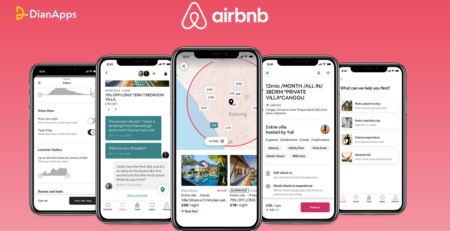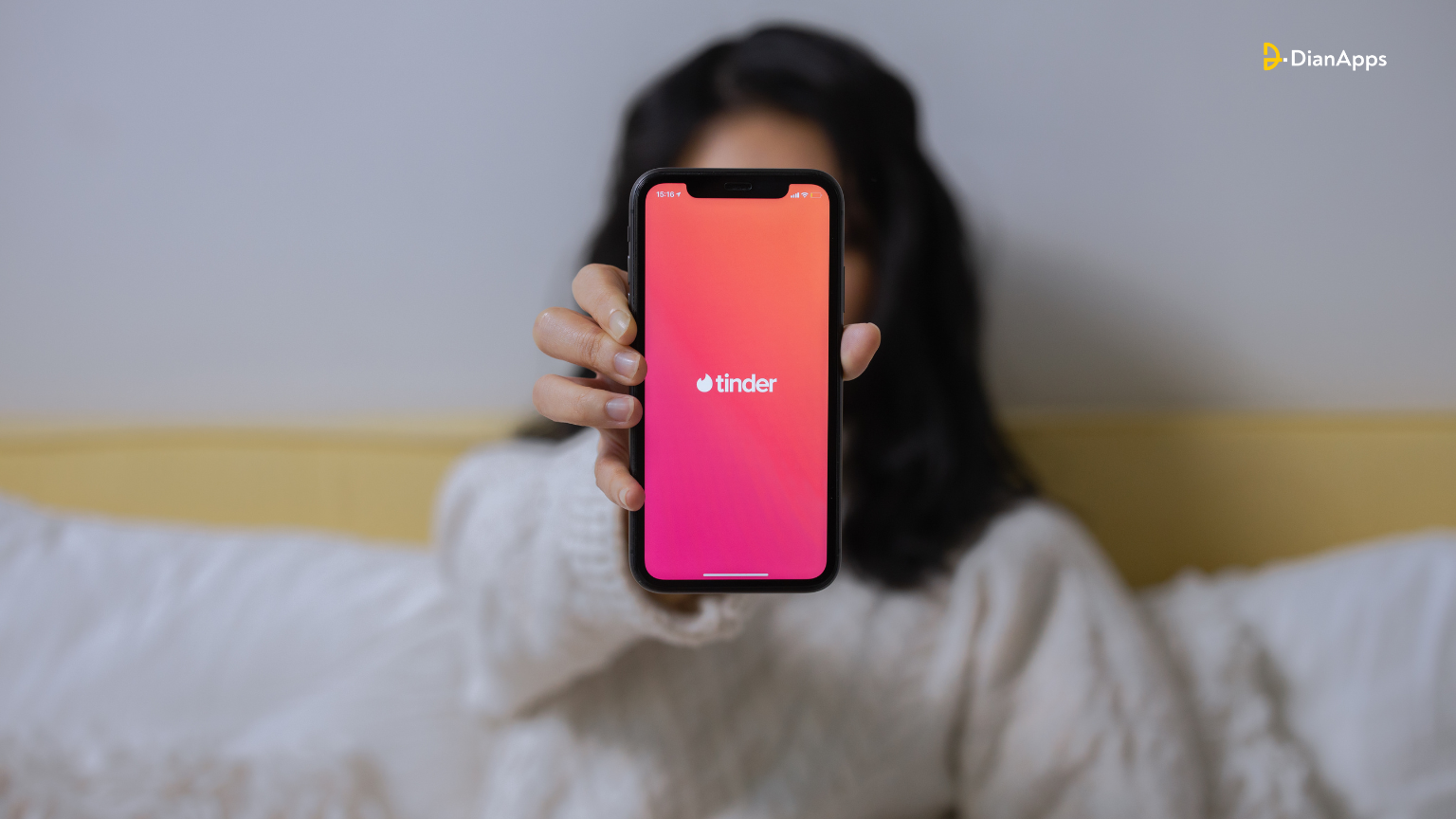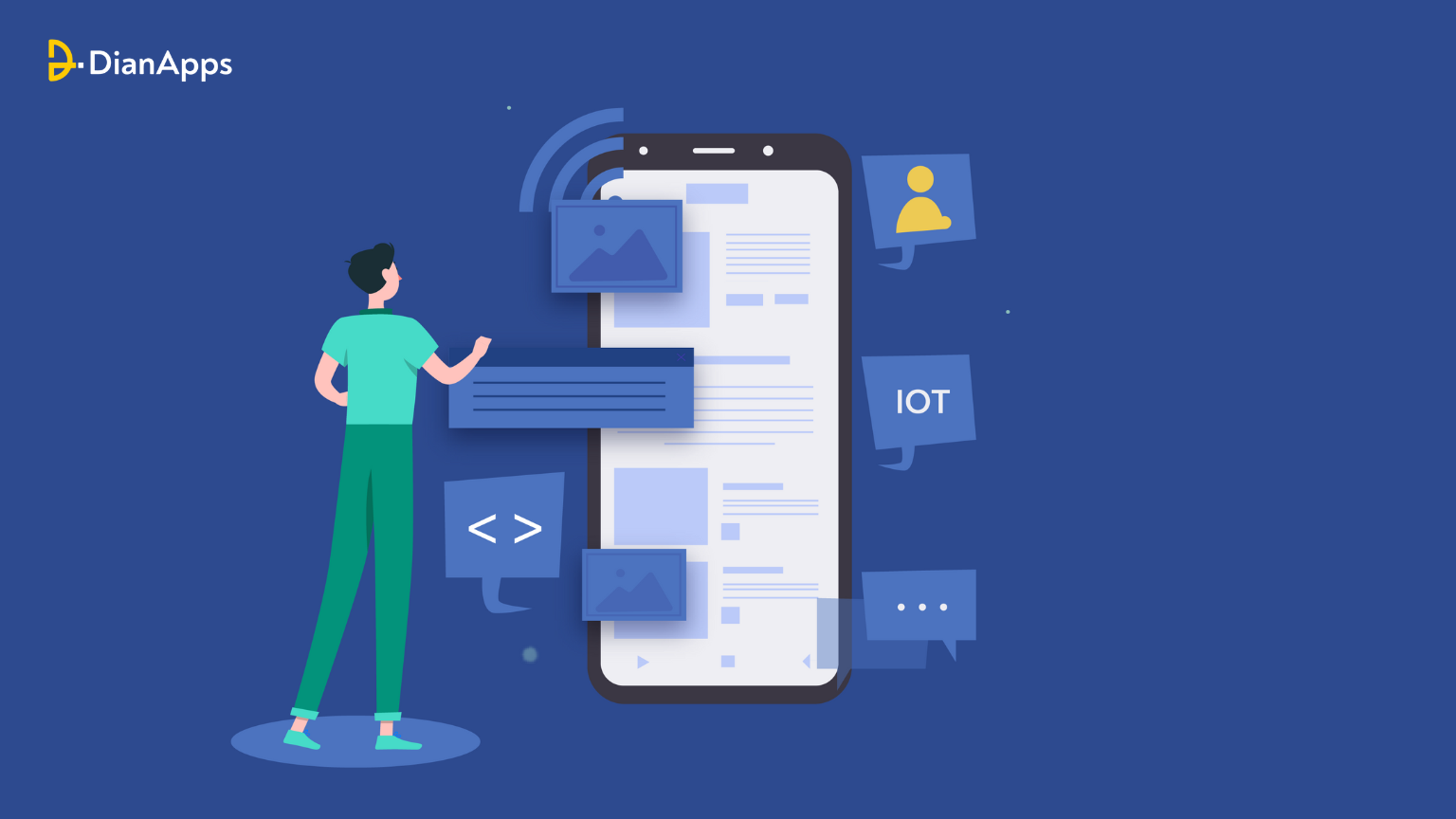From Zero to Flutter Hero: A Beginner’s Guide to App Development
Digital life changes have led us to many outstanding innovations in whatsoever thing we may come across. As mobile app downloads remain the major highlight of our daily lives, the capability to create functional apps has never been more valuable.
Think about it: apps have the ability to connect, amuse, and simplify our existence, whether they are games, productivity tools, or social networking platforms.
Think about it, whether it’s a game, a productivity tool, or a social media platform, apps have the power to connect, entertain, and simplify our lifestyle.
If you’re a beginner eager to dive into the world of mobile app development, you’re in the right place. Welcome to “From Zero to Flutter Hero: A Beginner’s Guide to App Development.” This comprehensive guide is designed to take you on a step-by-step journey, equipping you with the skills and knowledge needed to create your mobile apps using Flutter.
What sets this guide apart is its beginner-friendly approach. We understand that starting from scratch can be intimidating, but fear not! With our Flutter app development company, you’ll discover a powerful and intuitive framework that will pave the way for your success. By the end of this guide, you’ll be amazed at how far you’ve come and the potential you possess to become a Flutter hero.
So, buckle up and get ready to embark on an exciting adventure. Whether you’re an aspiring developer, a student, or someone with a brilliant app idea, this guide will provide you with the foundation to turn your dreams into reality. Let’s unlock the world of app development together and unleash your inner Flutter hero!
So fasten your seatbelts and get ready for a thrilling trip. This manual will provide you with the groundwork to make your goals come true, whether you’re an aspiring developer, a student, or someone with a great app concept. Let’s unlock the world of app development together and unleash your inner Flutter hero!
We’ll begin by understanding the app development basics and then move forward with our guide altogether!
Understanding App Development Basics
What is App Development?
App development refers to the process of creating software applications that run on various devices such as smartphones, tablets, smartwatches, and computers. These applications, commonly known as apps, serve specific functions and provide solutions to users’ needs or interests. App development services involve designing, coding, testing, and deploying applications to make them accessible to users.
With the widespread adoption of mobile devices and the ever-increasing reliance on technology, apps have become an essential part of our lives. They enable us to communicate and access information with unprecedented convenience. From social media platforms to e-commerce development solutions, and from productivity tools to entertainment apps, the app ecosystem has transformed the way we interact with the world.
Different Types of Apps
There are various types of apps available, each with its own characteristics, advantages, and limitations. Here are three primary categories:
a) Native Apps:
Native apps are developed for specific platforms, such as iOS or Android, using platform-specific programming languages (Swift/Objective-C for iOS, Java/Kotlin for Android). They offer the best performance and take advantage of the platform’s specific features and capabilities. Native app development has direct access to device hardware and provides a seamless user experience. However, building separate versions for different platforms requires more development effort.
b) Hybrid Apps:
Hybrid apps are built using web technologies (HTML, CSS, JavaScript) and then wrapped in a native shell. They can run on multiple platforms, eliminating the need for separate codebases. Hybrid apps offer cross-platform compatibility and faster development time. However, they may suffer from performance limitations compared to native apps, especially for complex functionalities.
Head on to read our guide on cross-platform Vs native mobile app development to understand them briefly while also making the right choice when picking a tool for business development.
c) Web Apps:
Web apps are accessed through web browsers and run on various devices with an internet connection. They are built using web technologies (HTML, CSS, JavaScript) and offer easy accessibility since they don’t require installation. Web app development is platform-independent and offers a consistent user experience across devices. However, they may have limited access to device features and may not perform optimally compared to native or hybrid apps.
Introducing Flutter App Development
Flutter, developed by Google, is a cross-platform framework that revolutionizes app development. It enables developers to create stunning, high-performing apps from a single codebase that work flawlessly on both the iOS and Android platforms. Flutter uses the Dart programming language and provides a comprehensive set of pre-designed widgets, allowing developers to create stunning user interfaces with ease.
One of Flutter’s key benefits is its hot-reload functionality, which enables developers to observe changes in real time and speeds up and optimises the development process. Thanks to the rendering engine that is already present in the framework, Flutter apps are renowned for their exceptional performance and fluid animations.
By using Flutter, mobile app developers can save time and effort by maintaining a single codebase for both iOS and Android platforms. This cross-platform capability makes Flutter an ideal choice for startups, individual developers, and companies looking to reach a wide audience with their apps.
We’ll walk you through setting up your development environment, getting to know the basics of Flutter, and creating your first Flutter app in the parts that follow. Let’s get started right away!
In the following sections, we’ll guide you through the process of setting up your development environment, understanding Flutter fundamentals, and building your first Flutter app. Let’s dive in right away!
Setting Up the Development Environment
Installing Flutter
Installing Flutter is the first step toward setting up your development environment. You may complete the installation procedure on Windows, macOS, and Linux by following the instructions below.
You may also read about Flutter’s 3.0 version describing briefly on macOS & Linux updates, to keep you equipped with what’s happening in the framework currently.
Make sure you have the following prerequisites before you start:
- A device running a Linux distribution, macOS (64-bit), or Windows 7 or a later version.
- On your hard disc, there is around 400 MB of free space.
- Administrator access to your machine.
Let’s get started:
Windows:
- Visit the Flutter SDK download page: https://flutter.dev/docs/get-started/install/windows
- Click on the “Windows” tab to download the Flutter SDK for Windows.
- Extract the downloaded ZIP file to a location on your computer (e.g., C:\src\flutter). This will be your Flutter installation directory.
- Add the Flutter binaries to your system’s PATH:
- Open the Start menu and search for “Environment Variables.”
- Click on “Edit the system environment variables.”
- Click the “Environment Variables” button in the “System Properties” box.
- Under “System Variables,” select the “Path” variable and click on “Edit.”
- Click on “New” and add the Flutter installation directory’s bin folder path (e.g., C:\src\flutter\bin).
- Click “OK” to save the changes.
macOS:
- Visit the Flutter SDK download page: https://flutter.dev/docs/get-started/install/macos
- Click on the “macOS” tab to download the Flutter SDK for macOS.
- Open the downloaded DMG file and drag the Flutter folder to a location on your computer (e.g., /Users/your_username/flutter). This will be your Flutter installation directory.
- Run the following line in the Terminal to add the Flutter binaries to your PATH:
|
1 |
export PATH="$PATH:/Users/your_username/flutter/bin" |
Linux:
- Visit the Flutter SDK download page: https://flutter.dev/docs/get-started/install/linux
- Click on the “Linux” tab to download the Flutter SDK for Linux.
- Extract the downloaded tarball to /home/your_username/flutter, for example, on your computer. This will serve as the location for installing Flutter.
- Open Terminal and run the following command to add the Flutter binaries to your PATH:
|
1 |
export PATH="$PATH:/home/your_username/flutter/bin" |
After completing the installation steps above, you can verify the Flutter installation by running the following command in Terminal or Command Prompt:
Flutter doctor:
This command will check for any missing dependencies and provide guidance on resolving them.
That’s it! You have successfully installed Flutter and configured your development environment. In the next sections, we will explore Flutter IDE and tools to guide you through building your first Flutter app.
IDE & Tools of Flutter To Know
When it comes to Flutter development, there are several popular Integrated Development Environments (IDEs) available. Here are two widely used IDEs:
1. Visual Studio Code (VS Code):
Visual Studio Code is a lightweight, free, and open-source code editor developed by Microsoft. It offers excellent support for Flutter development through extensions.
2. Android Studio:
Android Studio is a fully-featured integrated development environment developed by Google specifically for Android app development. It provides comprehensive support for Flutter development out of the box.
Both VS Code and Android Studio offer a range of features and extensions that enhance the Flutter development services experience. Here are some essential Flutter plugins, extensions, and dev tools:
- Flutter DevTools: A suite of performance and debugging tools for Flutter apps. It provides insights into app performance, widget inspector, and more.
- Flutter Inspector: A built-in tool available in both VS Code and Android Studio that allows you to inspect and modify your app’s widget tree during runtime.
- Flutter Intl: An extension that simplifies internationalizing Flutter apps by generating Dart code for localization.
- Dart DevTools: A set of debugging and performance analysis tools for Dart applications. It helps in profiling your code and optimizing performance.
- Pub.dev Assistant: An extension that assists in searching and managing Flutter packages from the pub.dev repository directly within your IDE.
These tools and extensions can significantly improve your development workflow, boost productivity, and help you build high-quality Flutter apps.
Learn more about Flutter tools by reading our top 10 tools for Flutter app development.
With your chosen IDE and the essential Flutter plugins, extensions, and dev tools installed, you’re all set to start coding your Flutter apps. In the upcoming sections, we’ll delve into Flutter fundamentals.
Fundamentals of Flutter Framework
-
Introduction to Dart (Programming Language)
Dart is a modern, object-oriented language developed by Google. Dart is designed to be easy to learn and offers a range of features that make app development efficient and enjoyable.
Here’s a brief overview of Dart’s fundamental concepts:
-
Syntax:
Dart has a clean and readable syntax similar to many other programming languages. It uses curly braces for code blocks, semicolons to terminate statements and indentation for code organization.
-
Variables:
In Dart, you can declare variables using the var keyword, followed by the variable name and an optional type annotation. Dart supports various data types such as int, double, String, bool, and more.
-
Control Structures:
Control structures like if-else, for and while loops, and switch statements for making decisions and repeating actions based on certain conditions.
-
Functions:
Dart supports both named and anonymous functions. You can define functions using the void keyword or specify a return type. Functions can have parameters and can be asynchronous using the async and await keywords.
-
Classes:
Dart is an object-oriented language, and classes play a central role. You can define classes to encapsulate data and behavior. Dart supports inheritance, interfaces, mixins, and other object-oriented concepts.
-
Understanding Flutter’s Widgets
In Flutter, widgets are the building blocks for creating user interfaces (UI). Everything in Flutter app development services is a widget, from simple elements like buttons and text to complex layouts and animations. Understanding widgets is crucial for building Flutter apps.
-
Stateless Widgets:
A stateless widget, as the name suggests, is immutable and does not maintain any internal state. It represents part of the UI that does not change over time. Stateless widgets are created by extending the StatelessWidget class and overriding the build() method to describe the widget’s UI structure.
-
Stateful Widgets:
Stateful widgets, on the other hand, can change their internal state during runtime. They maintain data that can be modified, triggering UI updates. Stateful widgets are created by extending the StatefulWidget class and defining two classes: the widget class and the state class. The widget class describes the widget’s UI structure, while the state class manages the mutable state and provides the build() method to describe how the widget should be rendered based on the state.
Here are examples of commonly used widgets in Flutter:
-
Container:
A widget that allows you to create a rectangular visual element. It can be styled, aligned, and used to contain other widgets.
-
Text:
A widget for displaying text. It can be customized with various styles such as font, size, color, and alignment.
-
Button:
Flutter offers different types of buttons, such as FlatButton, RaisedButton, and IconButton. Buttons provide interactive elements that users can tap or click.
-
Image:
A widget for displaying images. It supports different image sources, including local assets and network images.
These widgets have various properties and attributes that you can customize to achieve the desired visual and interactive behavior. Understanding how to use and compose widgets effectively is essential for building Flutter UIs.
It is now time to start building the Flutter app!
Building Your First Flutter App
1. Creating a new Flutter project
To create a new Flutter development project, follow these steps:
- Open your preferred IDE (such as Android Studio or Visual Studio Code) and check that Flutter is correctly installed and configured.
- Launch a new Flutter project through the command line or the IDE’s built-in project creation wizard:
- Command Line: Open a terminal or command prompt and navigate to the directory where you want to create your project. Run the following command:
flutter create project_name
- Once the project is created, the IDE will generate the initial project structure with essential files. Let’s explore the purpose of some of the important files:
- lib/main.dart: This file serves as the entry point for your Flutter app. It contains the main() function, which is the starting point for the app’s execution.
- You can now open the project in your IDE and proceed to build your app.
2. Designing the User Interface
In Flutter, the user interface (UI) is created using a widget hierarchy. Widgets are combined to create complex UI structures. Here’s how you can design your UI:
- Open the lib/main.dart file in your IDE and locate the build() method inside the main widget class (typically named MyApp).
- Remove the default code and start designing your UI using Flutter widgets. You can use the MaterialApp widget as the root of your app, which provides a material design visual style and several built-in features.
- Begin composing your UI by adding widgets inside the build() method. Flutter offers a wide range of widgets for various UI components like buttons, text, images, containers, and more.
- Use layout widgets like Column, Row, Container, Stack, and ListView to arrange and position your widgets on the screen. These layout widgets allow you to create responsive and flexible UI designs.
3. Adding Functionality
To add functionality to your Flutter app, follow these steps:
a. Handle User Interactions:
Attach event handlers to widgets to respond to user interactions. For instance, you can provide a function to run when a button is pushed using the onPressed attribute of a button widget.
b. State Management:
As your app becomes more complex, managing the app state becomes crucial. Flutter offers various state management approaches like setState(), Provider, Bloc, and GetX to handle app state and ensure consistent UI updates.
c. Implement Basic App Functionality:
Depending on your app’s requirements, you can add features like navigation between screens, data retrieval from APIs, form handling, local storage, and more. Use Flutter libraries and packages to simplify these tasks and enhance your app’s capabilities.
By following these steps, you’ll be able to build your first Flutter app with a well-known Flutter development company. As you gain more experience, you can dig deep into advanced topics and implement more complex functionality in your apps. Below we have mentioned the idea of what to do next!
Advanced Topics & Next Steps
- Working with APIs and Data
- State Management Techniques
- Testing and Debugging
- Publishing your app
Wrapping Up
Now that you have gained a solid foundation in Flutter app development, it’s time to continue exploring your skills. Flutter offers a vast ecosystem of resources, libraries, and community support to help you excel in app development.
Keep building and experimenting with new features and app ideas. Continue learning about advanced Flutter concepts, such as animations, advanced UI designs, and integrating backend services.
Remember, app development services are an ever-evolving field, and staying curious and up-to-date with the latest trends and technologies will set you on the path to success.
It’s now time to begin your journey as an app developer, and have a fantastic experience in building amazing Flutter apps!




